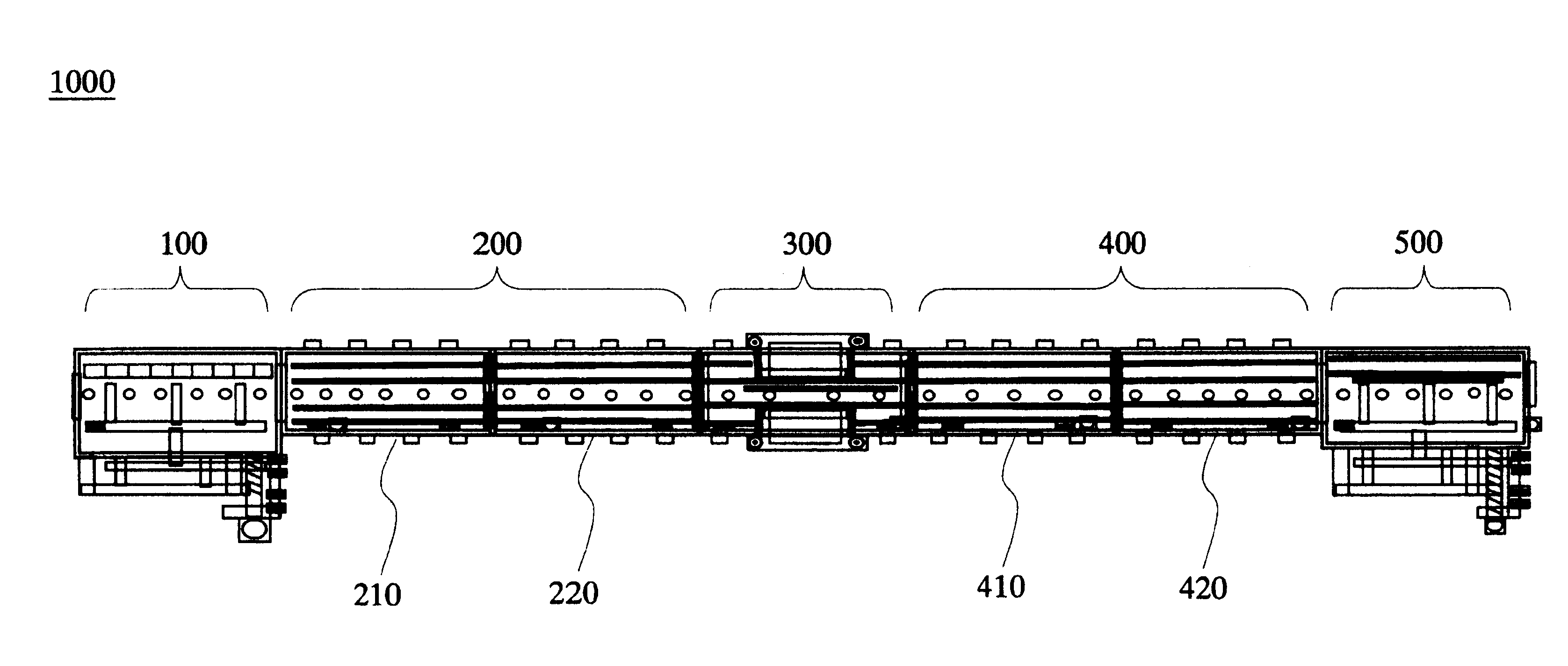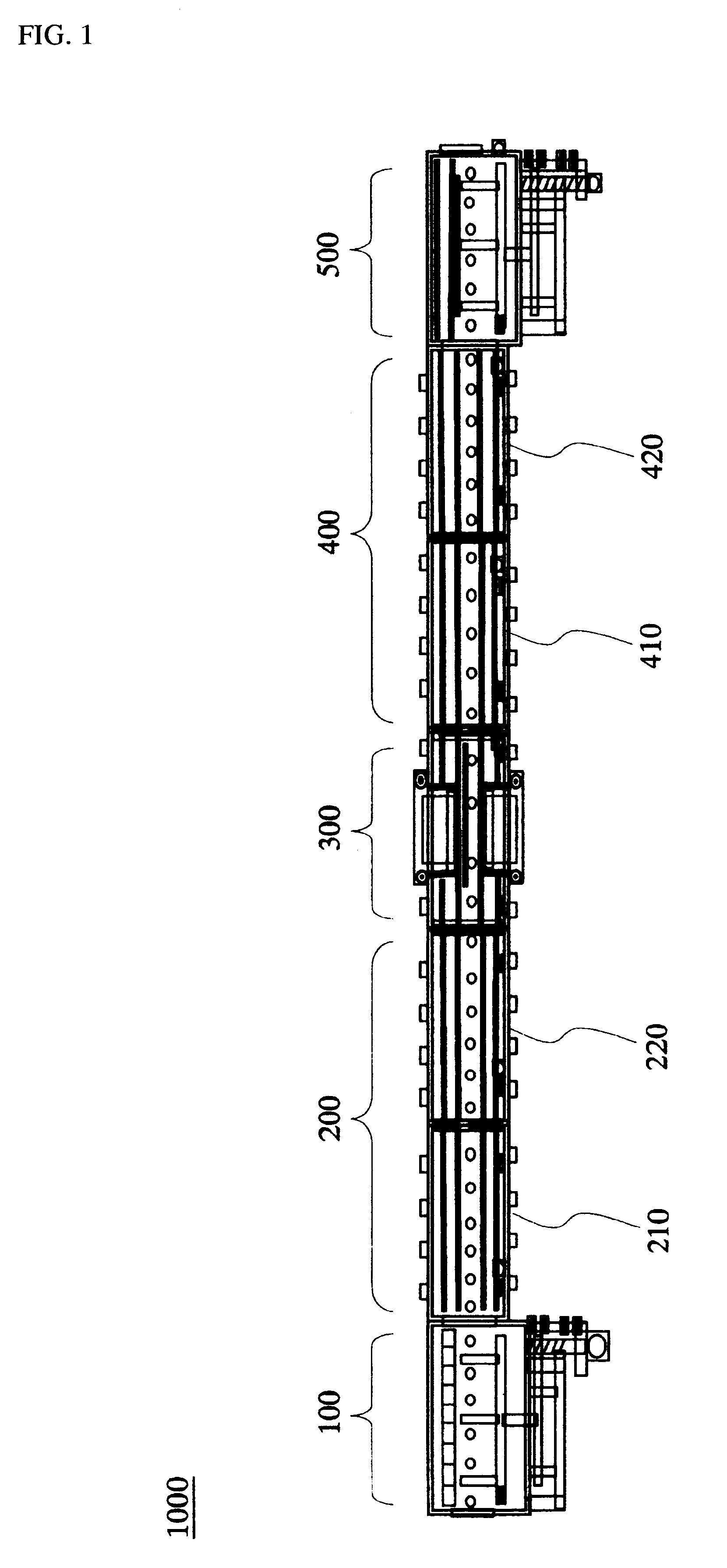Apparatuses for heat-treatment of semiconductor films under low temperature
a technology of semiconductor films and apparatuses, applied in the field of apparatuses for heat treatment of semiconductor films under low temperature, can solve the problems of glass damage or distortion, high thermal budget, easy deformation of glass, etc., and achieve the effect of enhancing the motion of charged defects, high resistivity, and high resistivity
- Summary
- Abstract
- Description
- Claims
- Application Information
AI Technical Summary
Benefits of technology
Problems solved by technology
Method used
Image
Examples
Embodiment Construction
Referring to FIG. 1, a low-temperature heat-treatment system 1000 which includes a low-temperature heat-treatment apparatus according to the present invention consists of a supply member 100, a preheating member 200, an induction heating member 300, a cooling member 400, and a manufacture member 500, which are connected in serial for the continuous process. Each of the preheating member 200 and cooling member 400 has two chambers (210, 220, 410, 420) for consecutive heating and cooling of heat-treatment materials. The sudden change of temperature may lead damage of thermally susceptible non-conducting substrates, which is not desirable.
Referring to FIGS. 2A and 2B, a second preheating chamber 220, an induction-heating member 300 and a first cooling chamber 410 are mounted in serial on a table 600 for minimizing the external effect. Also, they have closing covers 700 for the facilitation of disorder check and exchange of components during the operation. In particular, the induction-h...
PUM
| Property | Measurement | Unit |
|---|---|---|
| temperature | aaaaa | aaaaa |
| temperatures | aaaaa | aaaaa |
| temperature | aaaaa | aaaaa |
Abstract
Description
Claims
Application Information
 Login to View More
Login to View More - R&D
- Intellectual Property
- Life Sciences
- Materials
- Tech Scout
- Unparalleled Data Quality
- Higher Quality Content
- 60% Fewer Hallucinations
Browse by: Latest US Patents, China's latest patents, Technical Efficacy Thesaurus, Application Domain, Technology Topic, Popular Technical Reports.
© 2025 PatSnap. All rights reserved.Legal|Privacy policy|Modern Slavery Act Transparency Statement|Sitemap|About US| Contact US: help@patsnap.com



